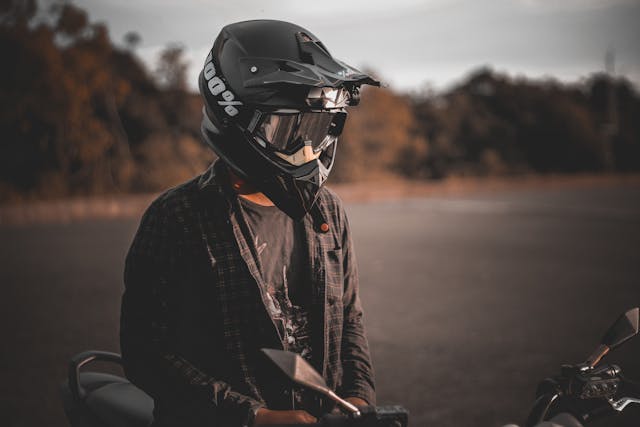Riding a motorcycle can be an exhilarating, yet risky experience. According to the National Safety Council (NSC), 6,218 motorcyclists died and 82,687 motorcyclists were injured in collisions during 2022 alone. Unlike cars, motorcycles offer riders very limited physical protection. The St. Petersburg motorcycle accident lawyers at Salter, Healy, River, & Heptner report that this lack of protection greatly increases the chances of serious injuries occurring. To help reduce the severity of injuries in the event of a crash, it is critical that motorcyclists wear the appropriate safety gear, such as helmets and boots.

Helmet
A helmet is the single most important piece of safety equipment that motorcyclists can wear. This is because helmets help to protect the head and brain, thereby reducing the risk of traumatic brain injuries (TBI), skull fractures, and other head injuries. The NSC reports that motorcycle helmets are roughly 37% effective in preventing fatal injuries to motorcycle operators and 41% effective for passengers. Helmet laws are enforced in most states across the country, though specific regulations vary.
While wearing a helmet is a step in the right direction, wearing one that meets the U.S. Department of Transportation’s (DOT) Federal Motor Vehicle Safety Standard (FMVSS) 218, is critical. A helmet that meets these standards should have an official DOT label on the back of the helmet, indicating its reliability in providing impact protection. Motorcyclists should ensure that their helmets are not ill-fitting, as this will compromise their effectiveness.
Gloves
Motorcycle gloves are an often overlooked piece of safety gear. In the event of a fall or accident, riders will instinctively put their hands out to protect themselves, which can result in severe hand injuries. However, wearing high-quality gloves can help to protect your hands, fingers, palms, and wrists, from serious cuts, bruises, and fractures. Things to look out for when selecting gloves include padding, abrasion resistance, impact protection, and reinforced wrist and knuckle support.
Jacket
While leather jackets are often regarded as a staple piece of clothing for any motorcyclist, they aren’t just for stylistic purposes. In fact, durable, leather jackets are essential for protecting the upper body from road rash and fractures. These jackets are specifically designed to resist abrasions in the event of a fall and provide padding in key areas, such as the elbows, shoulders, and back. Another highly recommended option for enhancing safety is a brightly colored or reflective jacket. This type of jacket increases visibility to other drivers, particularly in low-light conditions.
Boots
The final piece of equipment that is recommended for motorcyclists is boots, as a rider’s feet and ankles are particularly vulnerable in the event of a crash. Motorcycle boots are designed to provide stability and protect the feet, ankles, and lower legs, from impact, twisting, and crushing injuries. Unlike regular shoes, motorcycle boots have reinforced soles and provide ankle support, which can help to prevent fractures and sprains. If wearing motorcycle boots is not an option for you, at the very least, make sure that you wear closed-toe shoes.

